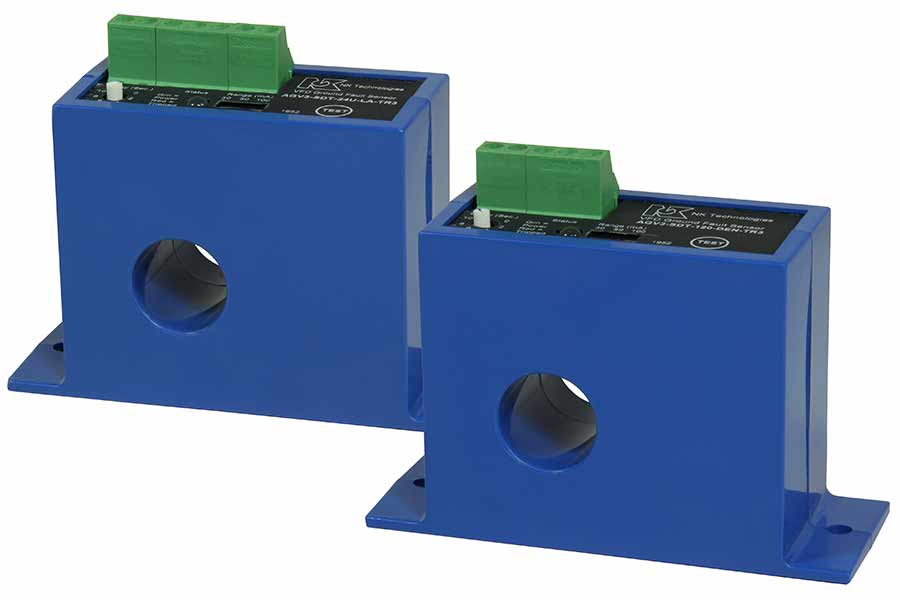
Max. Wire Bundle 0.75 in (19.1 mm) Dia.
AGV Ground Fault Relay
Designed for Variable Frequency Drives
AGV Series Ground Fault Relay helps protect products and processes from damage caused by ground fault conditions by monitoring all current-carrying conductors in grounded single- and three-phase delta or wye circuits.
The AGV Series Ground Fault Relay has the unique ability to detect faults to earth on the load side of a variable frequency drive. The carrier or switching frequency of the drive presents a difficult challenge: The fault current will be detected at the base frequency, which determines the motor speed. While many Variable Frequency Drives have ground fault detection built-in, the detection level is the same as the overcurrent limit. That approach will shut down the drive but only after considerable damage to the motor has occurred.
The output contact action can be selected as auto-reset for applications to control a shunt trip breaker or latching for applications to de-energize a contactor coil when a fault occurs.
OPTIONS TO MATCH APPLICATION NEEDS
- N.O./N.C. Single Pole, Double Throw relay outputs.
- Normally energized or normally de-energized contacts.
SETPOINT OPTIONS MAXIMIZE EASE-OF-USE
- Field-selectable 30 mA, 50 mA, or 100 mA setpoints on the AG3 “Tri-set” model allows fault detection suited for industrial environments.
- Fast, accurate and convenient.
COMPATIBLE WITH STANDARD EQUIPMENT
- Applicable on single- and three-phase systems.
- Ideal for use with shunt trip breakers.
- Magnetically isolated from monitored circuit and control power.
- Uses “zero sum” operating principle to reliably sense imbalance in magnetic fields associated with current leakage to ground.



